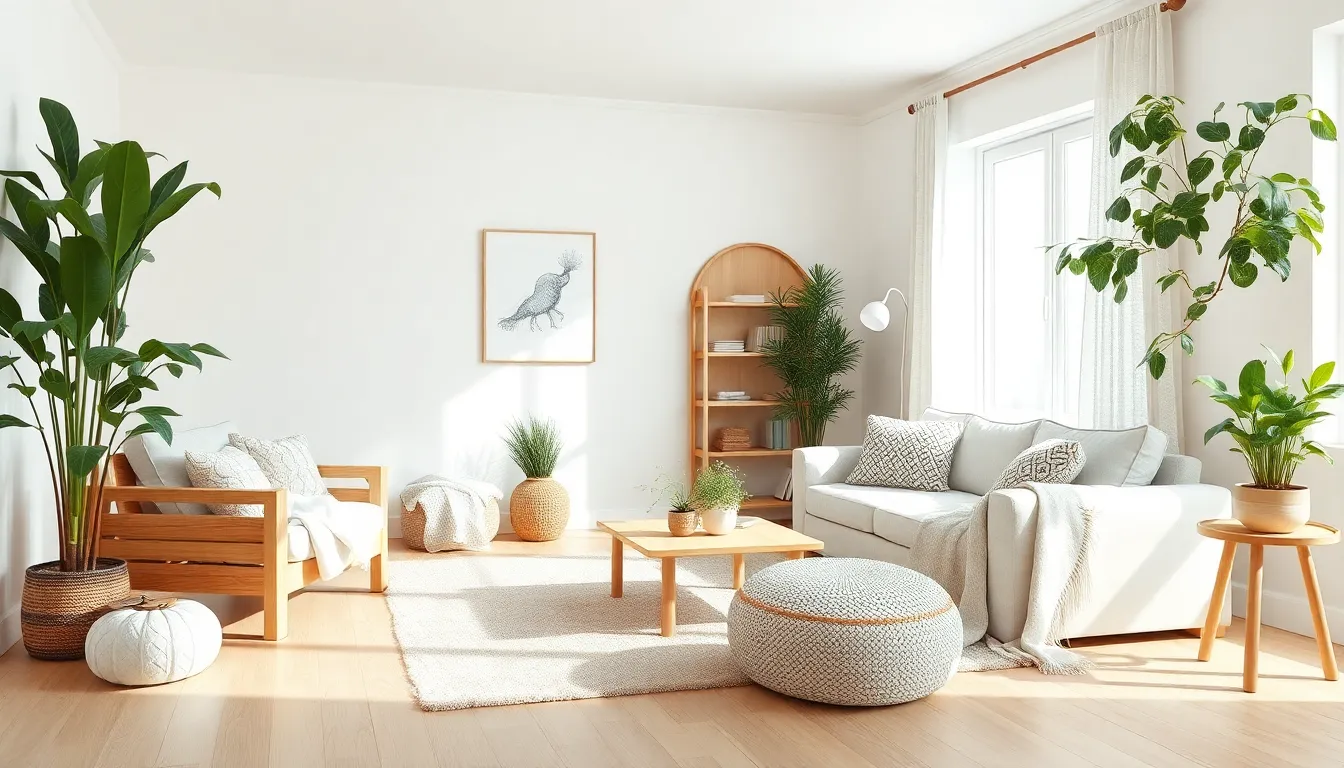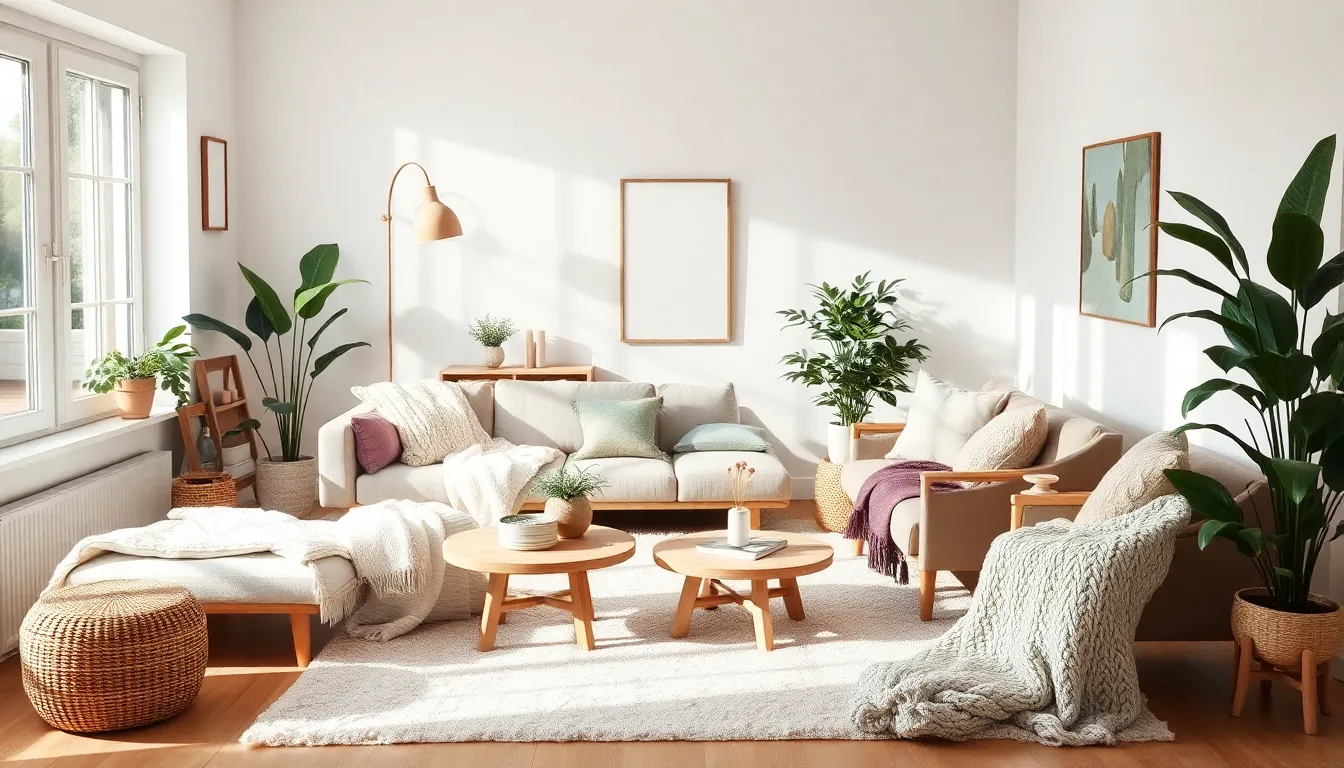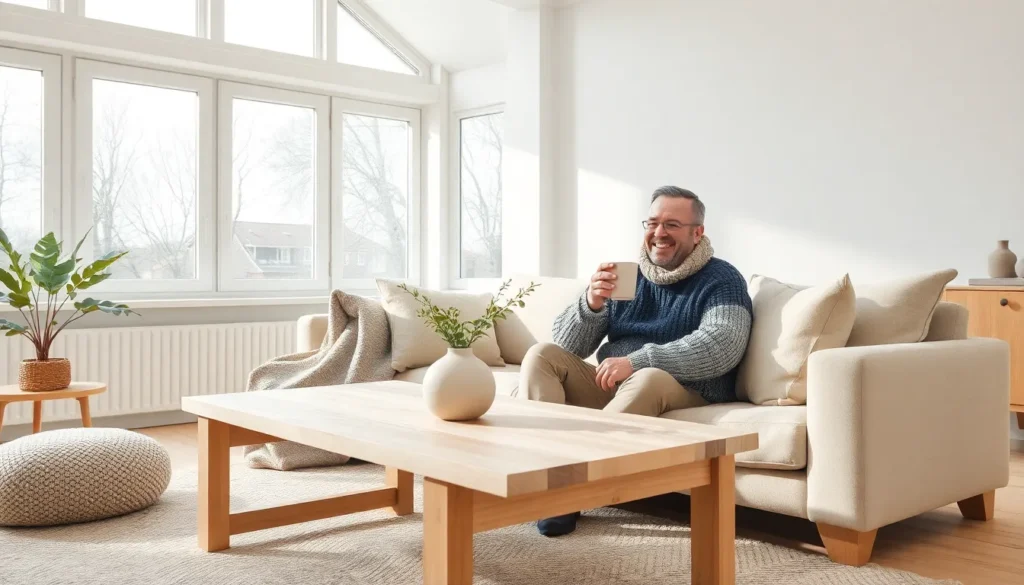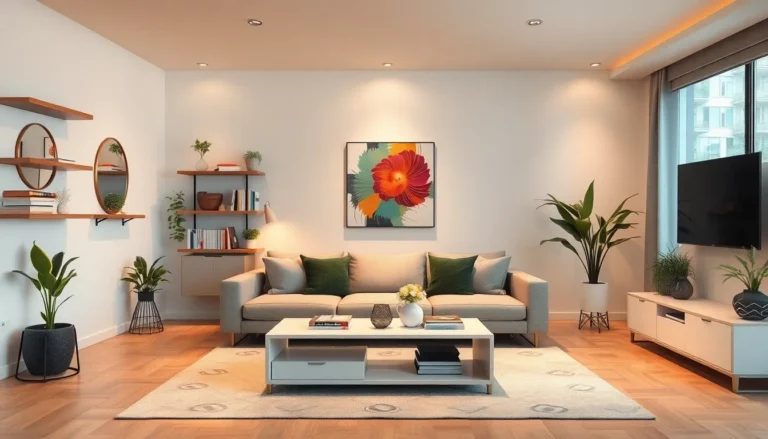Scandinavian interior design isn’t just a trend; it’s a lifestyle that whispers simplicity and shouts coziness. Imagine a space where minimalism meets warmth, and every piece of furniture feels like it was handpicked by a stylish Viking. With its clean lines and functional beauty, this design style turns homes into serene sanctuaries, making you wonder how you ever lived without a cozy nook for your afternoon coffee.
Table of Contents
ToggleWhat Is Scandinavian Interior Design?
Scandinavian interior design emphasizes simplicity, functionality, and minimalism. This approach focuses on creating serene and inviting spaces. Elements such as natural materials, light colors, and clean lines define the aesthetic. Designers often incorporate wood, particularly light-toned varieties, to bring warmth to homes.
Functional beauty plays a crucial role in this style. Each piece of furniture serves a purpose, enhancing both usability and visual appeal. Open spaces are common, allowing for fluid movement and an airy atmosphere. Additionally, large windows maximize natural light, fostering a bright and welcoming environment.
Color palettes remain neutral, including whites, grays, and soft pastels. Accents in bolder colors may appear but typically complement the overall aesthetic. Textures, such as knitted throws or soft rugs, provide comfort and contrast against the clean surfaces.
Scandinavian design promotes a connection to nature. Plants frequently appear in living spaces, adding life and color. Sustainable practices also influence many designs, favoring eco-friendly materials and energy-efficient features.
Lastly, artwork and personal touches enhance the aesthetic. Designers encourage incorporating personal collections or handcrafted items. This approach merges minimalism with individuality, creating a distinct and personal home environment.
Key Characteristics of Scandinavian Design



Scandinavian design centers on simplicity and comfort. This approach creates harmonious and inviting spaces that prioritize functionality.
Minimalism and Functionality
Minimalism highlights the importance of uncluttered spaces. Essential furniture pieces fulfill multiple roles while maintaining an elegant aesthetic. This design style values clean lines and minimal ornamentation. Spaces encourage fluid movement and easy interaction while focusing on practical living. Furniture choices often reflect Scandinavian roots, blending form and function seamlessly for a cohesive look. When designed properly, these environments foster a sense of tranquility and purpose.
Natural Materials and Textures
Natural materials play a vital role in Scandinavian design, with wood being a primary choice. Light-toned wood adds warmth and a touch of nature indoors. Textures provide coziness while contrasting the clean lines typical of this aesthetic. Soft rugs and knitted throws enhance comfort, inviting relaxation. Plants contribute to the overall ambiance, bringing life into spaces. Sustainable practices highlight an eco-friendly approach, ensuring materials are responsibly sourced. These elements together create a serene environment that resonates with nature and promotes well-being.
Color Palette Inspiration
Scandinavian interior design thrives on a thoughtful color palette that promotes tranquility and harmony. Color choices play a critical role in enhancing the simplicity and elegance of the space.
Neutrals and Earthy Tones
Neutral shades dominate the Scandinavian aesthetic, creating a serene background. Whites, grays, and beige foster a sense of calm, allowing other design elements to shine. Earthy tones deepen the connection to nature, enhancing warmth and creating inviting environments. Brown hues, inspired by natural wood, complement furniture and decor seamlessly. Soft pastel colors, like light blue or gentle green, add a subtle yet refreshing touch without overpowering the overall ambiance.
Pops of Color
Incorporating pops of color can energize a Scandinavian space without overwhelming it. Bright accents, such as mustard yellow or deep teal, inject personality and warmth. These accents can appear in cushions, artwork, or decorative pieces, providing visual interest and contrast. Careful placement of vibrant items balances the neutrality of the base palette, ensuring harmony remains intact. Occasional bold colors create focal points that draw the eye, enhancing the minimalist approach without compromising comfort or serenity.
Furniture and Decor Ideas
Scandinavian design emphasizes both beauty and function in furniture and decor. Thoughtful choices create inviting and practical environments.
Versatile Furniture Designs
Modular sofas enhance flexibility and adapt to diverse space requirements. Multipurpose coffee tables serve as stylish surfaces and storage solutions. Lightweight dining sets promote easy rearrangement while encouraging social interaction. Unique accent chairs add personality without overwhelming the space. Furniture pieces in light-toned woods create warmth and balance, harmonizing with neutral surroundings. Minimalist designs allow these elements to shine, supporting both aesthetics and functionality.
Incorporating Textiles and Patterns
Textures play a crucial role in Scandinavian design, enhancing the cozy atmosphere. Wool blankets and knitted throws introduce warmth, inviting relaxation. Soft rugs anchor furniture arrangements and add visual interest. Natural fiber cushions create comfort while complementing the overall aesthetic. Patterns, such as subtle stripes or geometric shapes, add depth without detracting from the minimalist approach. Incorporating these textiles cultivates a layered look, fostering a sense of serenity and balance.
Lighting Solutions in Scandinavian Design
Integrated lighting plays a crucial role in Scandinavian interiors. Ambient light sources, such as pendant lamps and wall sconces, help create a warm, inviting atmosphere. Natural light maximizes the sense of space, making large windows a fundamental aspect of design.
Layered lighting enhances functionality and comfort. Combining different types of lighting—task, ambient, and accent—adds depth to rooms. Floor lamps, with their sleek designs, serve both practical and aesthetic purposes, providing reading light and visual interest.
Choosing warm-toned bulbs contributes to the overall coziness of a room. Bright white light can sometimes feel harsh and uninviting. Soft, indirect lighting, such as using dimmers, allows for adjustable ambiance suitable for various activities and moods.
Decorative light fixtures also add character to spaces. Fixtures with simple lines and organic shapes often embody Scandinavian design principles. Unique designs can become focal points while maintaining the minimalist aesthetic.
Incorporating candles further enriches the lighting experience. Candles create a serene atmosphere and connect to nature, making them a staple in Scandinavian homes. Arranging them thoughtfully enhances a sense of tranquility and warmth.
Overall, focusing on versatile and functional lighting solutions enhances Scandinavian interiors. Each light source contributes to the serene, cozy atmosphere characteristic of this design style. Emphasizing natural light and warm tones fosters a harmonious living environment that supports comfort and style.








